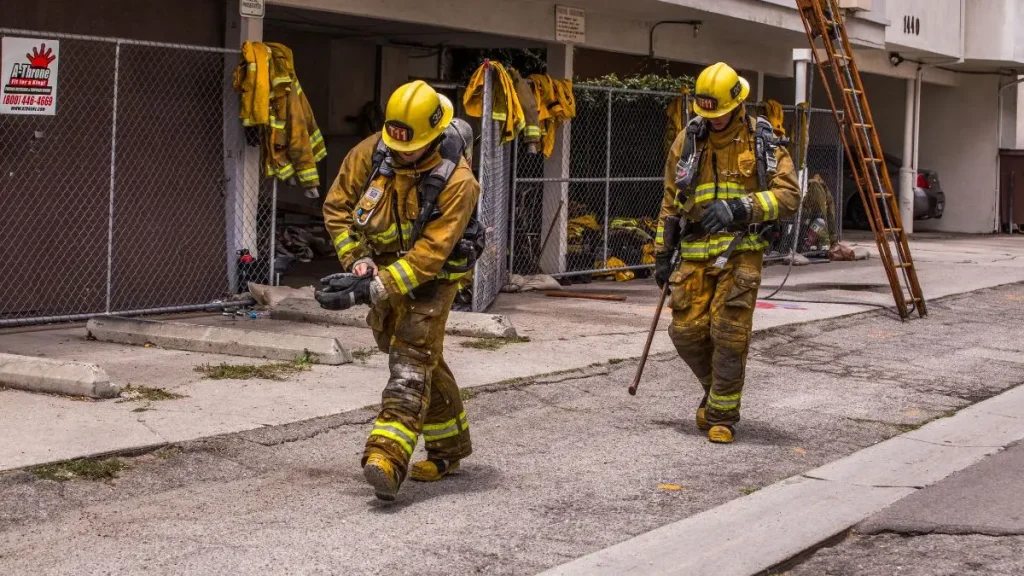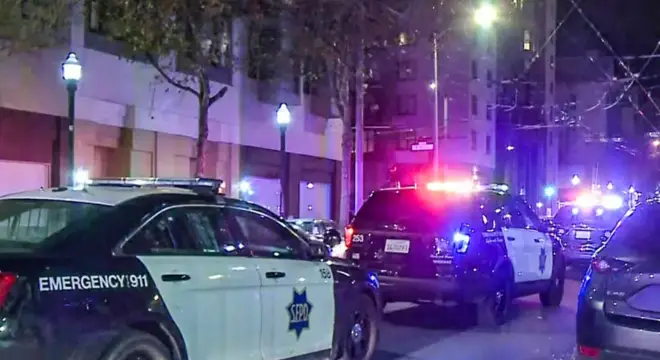Man Allegedly Set Sterling Hoem Fire, Filed Insurance Claim After Neighbor’s Death
When I first read the neighbors’ account, I felt the kind of disbelief that stays with you. It was the early hours of Oct. 24 in the Lowes Island area of Sterling — a place most people think of as sleepy at that hour. Neighbors say they woke to a brightness they assumed was daylight, only to check the clock and find it was 1 a.m.
You can picture it: a back porch suddenly alight, flames licking up between townhomes, the kind of blaze that moves fast in tightly packed units. People rushed outside and heard a voice calling for help from inside one of the homes — Madelaine Akers, 36.
Neighbors describe the scene in the blunt, stunned way people do after trauma: “She’s asking for help, and there’s nothing we could do.” A few minutes of screaming, and then silence.
Loudoun County Fire and Rescue answered with a three-alarm response. Firefighters forced entry and, tragically, found Akers trapped inside her townhouse. Despite the rapid response, she did not survive. The unit next to hers — the end unit — was a total loss, and the neighborhood was left with the immediate shock of a life cut short in a place where most of us expect safety at night.
Investigators Trace the Fire Back to a Neighbor

After days of combing through the charred remains and camera footage, investigators began to see a pattern that didn’t fit an accident. According to NBC Washington, the Loudoun County Fire Marshal and Sheriff’s Office pieced together that the flames started behind Akers’ townhouse — not inside her home. That detail alone was enough to raise suspicion.
But what really broke the case open was technology. Detectives pulled doorbell camera footage from nearby homes and matched it with tracking data from a car linked to one of Akers’ neighbors — 78-year-old Jacob Bogatin. Within days, the data trail and physical evidence pointed in one direction: the fire was deliberately set.
By Tuesday, Bogatin was in custody. Authorities charged him with first-degree murder and arson of an occupied dwelling. It was a shocking twist for a quiet Sterling block — a respected-looking retiree now accused of setting a deadly fire that claimed a neighbor’s life.
As someone who’s followed enough local investigations, I can tell you this much: when law enforcement emphasizes “intentional origin” this early, it means they’re confident in their forensic timeline. They usually know how the fire began — and often why.
This wasn’t the first time a quiet neighborhood woke up to an unexpected blaze. In North Reading, Massachusetts, a similar overnight fire erupted twice within 24 hours, leaving residents equally stunned.
The Insurance Scheme That Changed Everything
According to FOX 5 DC, the real twist came the very next day — when an insurance claim appeared in the system for Bogatin’s home. Investigators say it was filed less than 24 hours after the fire, and the claim amount was more than double what was owed on the property.
That detail shifted the tone of the investigation entirely. What looked like a tragic house fire now appeared to be a calculated move for financial gain. Court documents revealed that Bogatin’s home had been recently foreclosed, and he was under intense financial pressure. Filing a large claim right after the blaze only deepened suspicion that money was the motive.
This is where real investigative work meets financial forensics. Insurers and fire investigators often look at claim timing, recent policy changes, and debt history — and in this case, all signs aligned too neatly. The tragedy is that while someone was fighting for her life next door, the alleged arsonist was already thinking about paperwork.
A Past Shrouded in Financial Fraud
When reporters began digging into Bogatin’s background, they uncovered a troubling history. Court records show that back in 2003, he was named in a federal case involving RICO conspiracy, wire fraud, money laundering, and SEC violations.
The government had accused him and several others of building a fake company, taking it public, and defrauding investors out of tens of millions of dollars. It was the kind of white-collar scheme that leaves a long paper trail — and, apparently, a long shadow.
The records didn’t clearly show how that old case ended, but it revealed something deeper: a pattern. Fraud, manipulation, and financial desperation were not new themes in Bogatin’s life. So when investigators saw an insurance claim appear hours after a deadly fire, the dots practically connected themselves.
For readers who’ve seen similar stories, this part often gets buried. But it matters — not to sensationalize, but to understand behavior. Patterns of deception rarely start overnight.
Stories like these don’t always make national headlines, but they deserve attention. If you like staying updated on real home safety cases and local fire investigations that often slip under the radar, join our HomeWatch alert feed on WhatsApp — it’s where I share verified updates and new reports as they happen.
Remembering Madelaine Akers
Every news story like this risks reducing a person’s life to a headline. Madelaine Akers deserves more than that. She was 36 — a neighbor, an artist, and someone who, by all accounts, filled her home with laughter and plants. Friends described her as warm and grounded, the kind of person who always waved when walking her dog.
After the fire, neighbors held an impromptu vigil outside the row of blackened townhomes. Someone left flowers.
In moments like this, it’s easy to focus on the suspect, the evidence, the charges. But every crime scene is also a life interrupted. Akers didn’t just lose her home — she lost her future. And her neighbors, still haunted by her cries that night, are left with the sound of helplessness that doesn’t fade easily.
How Authorities Pieced It Together?

The Loudoun County Fire Marshal’s Office spent days reconstructing the timeline. Investigators ruled out every accidental cause — no electrical faults, no appliance malfunctions, no gas leaks. What they found instead was clear evidence of an exterior ignition point, behind Akers’ townhouse, in the direction of Bogatin’s property.
Doorbell footage showed movement in that area just before the fire erupted. Vehicle tracking placed Bogatin’s car near the scene. That digital evidence, combined with the rapid insurance claim, gave detectives the full puzzle picture.
It’s not often that a case moves this quickly — arson investigations can drag for months. But when every clue aligns, prosecutors move fast. The Sheriff’s Office coordinated with fire investigators, insurance specialists, and forensic analysts to make sure the charges stuck.
From a journalistic standpoint, this case stands out because it shows how modern forensics and digital data — cameras, sensors, even smart devices — now define truth in criminal investigations. What once relied solely on witness memory is now backed by timestamped evidence.
And in Sterling’s quiet neighborhood, that technology may have given justice a voice — for someone whose own was silenced by the flames.
In another case out of New York, investigators used similar surveillance and sensor data to trace the cause of a fire that injured firefighters and displaced multiple residents.
Lessons for Homeowners & Policyholders
Stories like this don’t just make headlines; they force every homeowner to pause and think. Could something like this happen next door? Or worse — could someone’s poor decision put your safety at risk?
Here’s what I tell people: start with your own awareness and protection.
- Review your insurance policy. Know what’s covered, what’s not, and make sure your coverage reflects your home’s current value.
- Document your belongings — a simple video walk-through can make claims smoother if tragedy ever strikes.
- Stay alert in your community. If a neighbor’s property shows unusual activity — moving out before a “random” fire, sudden renovation delays, or recent financial trouble — take note. You don’t need to be suspicious, just aware.
And most importantly, fireproof what you can control. Check your smoke detectors, keep extinguishers handy, and teach your family what to do in the first minute of a fire. It’s never paranoia when prevention is your goal.
If this case proves anything, it’s that the line between personal safety and someone else’s recklessness can be heartbreakingly thin. Protecting your home is about more than locks and alarms — it’s about understanding the risks that hide in plain sight.
And sometimes, despite precautions, fires strike twice. A recent Monroe home fire left six residents and eight pets displaced — a reminder that prevention and quick response go hand in hand.
What Happens Next?
As of now, Jacob Bogatin remains in the Loudoun County jail, facing charges of first-degree murder and arson of an occupied dwelling. Prosecutors are preparing for what’s expected to be a complex case — one that blends physical evidence, digital forensics, and financial motive.
There’s still a lot we don’t know: Will Bogatin plead guilty or fight the charges? How will the insurance company handle the fraudulent claim? And what justice will look like for Akers’ family — those are questions time will answer.
For Sterling residents, the shock hasn’t worn off. Many say they still can’t sleep easily at night. But they’re also determined — gathering donations, supporting first responders, and talking openly about what safety means in their community now.
When you step back from the headlines, that’s what stays with you. Behind every investigation and court date, there’s a community trying to rebuild trust and a family trying to heal.
If you were living on that street, what would you want your neighbors to do differently next time — watch closer, act sooner, or just care more?
That’s a question worth asking all of us.
If stories like this make you rethink home safety, explore more real-life fire cases and recovery lessons on our Home Incidents section— every case has something to teach before it’s too late.
Disclaimer: All information in this article is based on publicly available reports and official statements from law enforcement and fire investigators. Details may evolve as the case proceeds in court. Readers are encouraged to refer to verified local authorities or news outlets for future updates.


